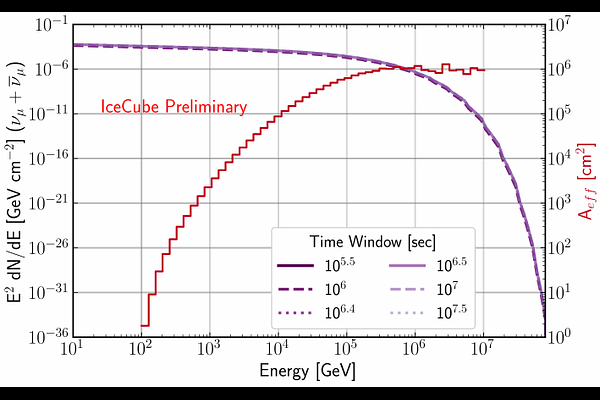Results from IceCube Follow-up of Nearby Supernova SN2023ixf

Results from IceCube Follow-up of Nearby Supernova SN2023ixf
Alicia Mand, Justin Vandenbroucke, Jessie Thwaites, Sam Hori, Aswathi Balagopal V
AbstractCore-collapse supernovae are of particular interest in multi-messenger astronomy due to their potential to accelerate cosmic rays and produce high-energy neutrinos. One such supernova is the recent SN2023ixf located in M101 (the Pinwheel Galaxy). It is the closest (6.4 Mpc) and brightest (B band magnitude 10.8) core-collapse supernova in nearly a decade. This supernova likely had a progenitor surrounded by dense circumstellar material which, during the supernova, may have produced neutrinos when ejecta collided with the material. I will present results of a follow-up of this supernova using data collected from the IceCube Neutrino Observatory located at the South Pole. We obtain results consistent with background expectations with time-integrated energy flux ($E^2 dN/dE$) upper limits of 0.35 GeV/cm$^2$ for a 32-day time window and 0.44 GeV/cm$^2$ for a 4-day time window, both at 90% confidence level for an $E^{-2}$ power law. These correspond to values of $2.7 \times 10^{48}$ erg for the 32-day time window and $3.5 \times 10^{48}$ erg for the 4-day time window at the supernova.